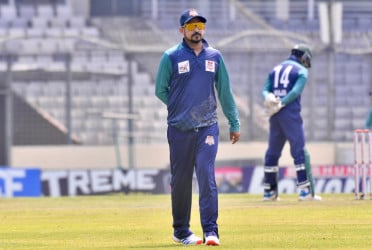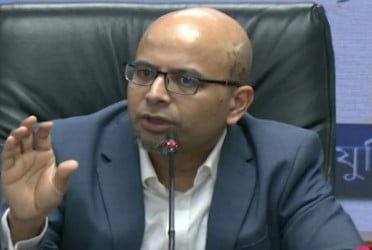Two tiny tots of a Chattogram village met the tragic end due to drowning in a pond just prior to the last Eid-ul-Azha, leaving their near and dear ones to cry forever, reports BSS.
Six-year-old Prattya and four-year-old Mehul were cousins and used to play together at their village home. As part of their daily game plan, the two ill-fated boys went down a pond nearby their homes at Charkanai village in Patiya upazila of Chattogram. With good luck betraying them, the two minor boys drowned while playing, putting their parents in total disarray.
Their distraught families will continue to imagine that the unexpected deaths could have been prevented with increased supervision and more awareness.
The newspaper reports of drowning deaths are a common sight in Bangladesh, and thus it comes as no surprise that drowning causes 10,000 accidental deaths in the country every year.
Though thousands die every year due to drowning, it is still not considered a health concern in public consciousness and remains unchecked by authorities.
There have been hundreds of cases of children drowning documented by the non- government organizations (NGOs). Strangely, drowning, not malnutrition, is the single largest killer of children (aged one to five years) in Bangladesh. It claims the lives of 30 children (aged under five) every day and occurs within 20 meters of the home, especially when children are left unsupervised.
In rural areas, about every household has a pond, some a few feet deep and some deeper than five feet. This puts children at risk because they run around, in and out of the homestead. It is not possible for parents to keep a watchful eye on them round the clock. It is easy for a child to slip out of sight and fall into a ditch or a pond and most children do not know how to swim to safety (because small children can drown even in buckets of water).
The global scenario places drowning as the third leading cause of death. Interestingly, over 90 percent of drowning fatalities take place in low- and middle-income countries.
According to the International Drowning Research Centre (IDRC) there is water all around us, including our homesteads (in rural areas particularly). Age is a major risk factor for drowning. The highest rates of fatal drowning are found in the 1-4 years age group, when children start to walk and venture away from supervision.
Drowning is an under-recognised global public health issue causing an estimated 322,000 deaths each year, with nearly 94 percent of these deaths occurring in low- and middle-income countries.
In Bangladesh, drowning is the leading cause of death for children aged 1-4, with 10,000 children drowning every year. But there is a solution to prevent these unnecessary deaths. Bloomberg Philanthropies has been supporting anchals (community daycare centres) across the country since 2012, with 50,000 children currently enrolled. The benefits of anchals are numerous, including protection against drowning, but also cognitive and social development. Concerned quarters hope that the government of Bangladesh will support and scale up this programme to other regions of the country.
The drowning that claims thousands of lives annually has necessitated to go for a policy intervention of the authorities concerned to map out preventive measures to be taken.
Bd-Pratidin English/ Afsar Munna































































